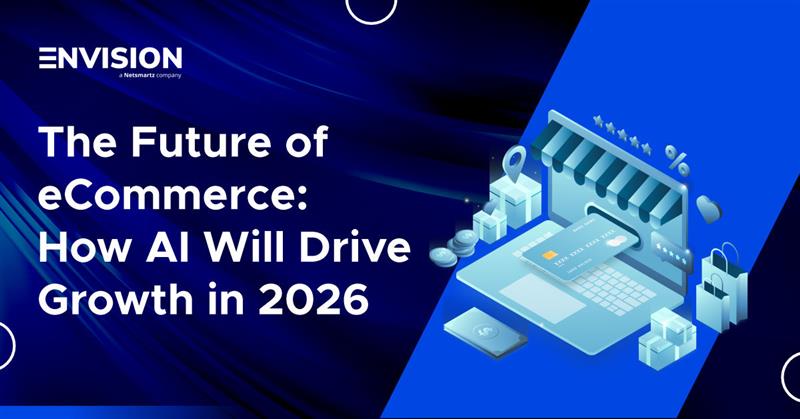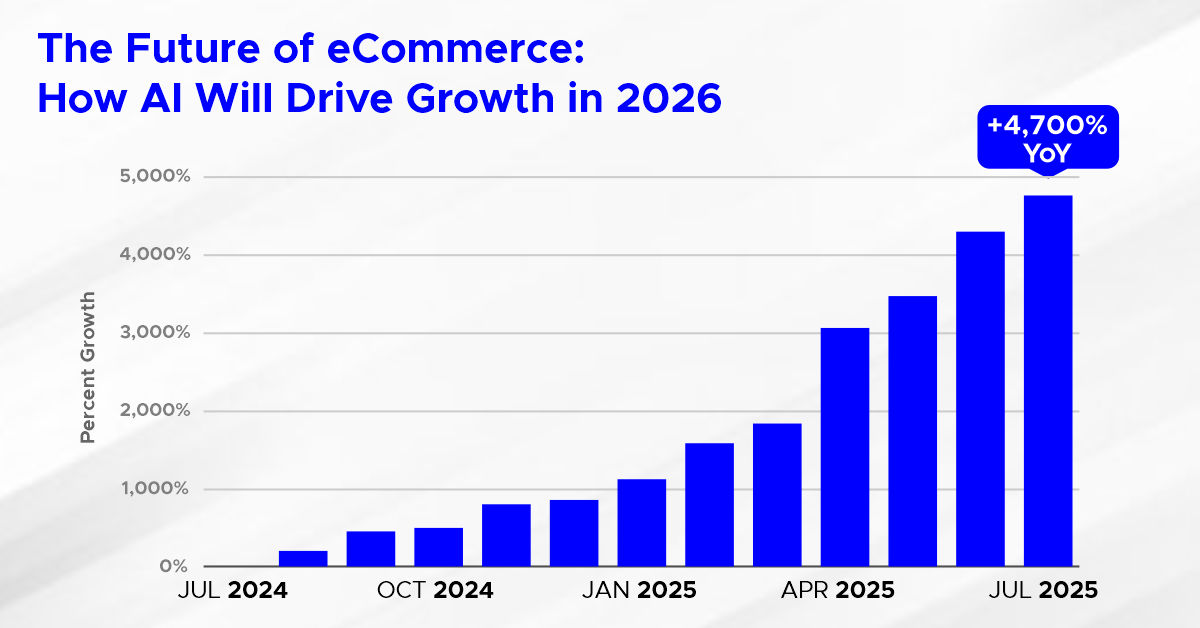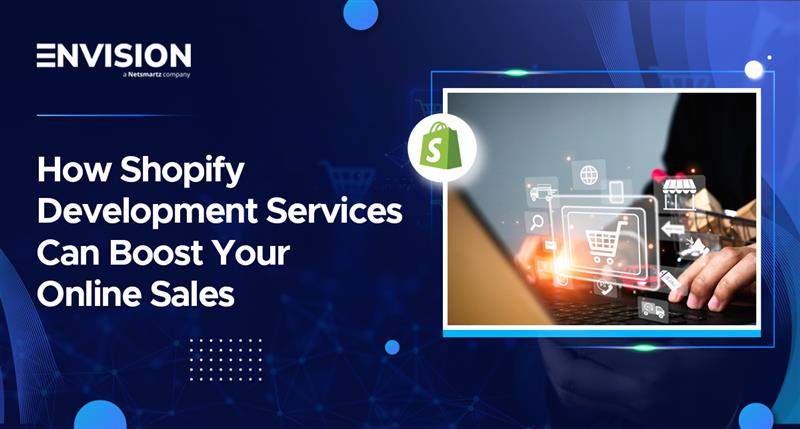The Future of eCommerce: How AI Will Drive Growth in 2026
-
admin_env admin
- 1 month

Come 2026, your best customers might not even be humans.
How? Well, imagine a digital shopping assistant receiving a request: “Furnish my apartment under $2,000, with a modern aesthetic, and eco-friendly options.”
The assistant instantly springs into action and scans thousands of products, checks delivery timelines, bundles the best deals, and completes the purchase without the shopper having to scroll through a single product page.
Sci-fi much? Not really. By 2026, AI-powered shopping agents will move from novelty to norm, reshaping how people discover, evaluate, and buy online. According to The Financial Times and Wall Street Journal, retailers like Walmart and Amazon are already pumping in a lot of resources into this future, betting that AI will become the “primary vehicle” for commerce by the mid-2020s.
For retailers, the message is clear: AI isn’t just another tool. It’s the growth elixir that will write the next chapter in the eCommerce story.
The State of eCommerce in 2025
The digital commerce landscape has never been more competitive or fragmented.
Observing eCommerce trends, Customer acquisition costs (CAC) continue to rise, while traditional search and social channels are losing steam as shoppers gravitate more towards AI-driven assistants. Adobe reported in 2025 that retail traffic is increasingly originating from AI surfaces, not just search engines or ads.

On the flip side, customer expectations are evolving faster than the speed of light. They want hyper-personalization, faster fulfillment, and reliable interactions while regulators raise the bar for transparency and ethical AI use. With the EU AI Act set to become fully applicable on August 2, 2026, retailers across Europe are in a proverbial race against time.
At this point, AI isn’t optional. It’s the only way to meet both customer demand and regulatory requirements at scale.
How AI Will Power eCommerce Growth in 2026
From the way customers discover products to how brands personalize their experience; AI is reshaping every step and facet of the shopping journey. Let’s explore some ways it will fuel eCommerce growth in 2026.
1. Hyper-Personalization at Scale
For years, personalization was largely limited to “customers who bought this also bought.” Now, AI is all geared up to deliver next-gen shopping journeys with tailored product recommendations, pricing, and promotions for each customer’s context.
According to BCG’s Personalization Index, leading retailers could generate a whopping USD 570B in incremental revenue by fully leveraging personalization through first-party data while growing 10 percentage points faster than their peers. Let that sink in.
Take Amazon’s Rufus, a generative shopping assistant that proactively analyzes reviews, compares alternatives, and tailors recommendations in natural language. By deciphering intent, not just click data, Rufus is shaping a future where every shopper experiences a unique storefront.
2. Smarter Operations and Supply Chains
AI in eCommerce isn’t just transforming the front-end; the back end is undergoing a total overhaul as well. Predictive analytics now help forecast demand, optimize inventory, and automate logistics to reduce costs and accelerate delivery.
French retailer Carrefour offers a glimpse of this future. Recently, it rolled out AI.Carrefour, a Gemini-powered assistant for over 125,000 employees across eight countries
The payoff is phenomenal: streamlined operations for businesses and faster, more dependable service for customers, which in turn functions as a crucial driver of loyalty.
3. Conversational Commerce & AI-Powered CX
In this era of instant gratification, customers crave immediacy. They want answers yesterday and actions to be completed without lifting a finer. So, it won’t be wrong to say that the days of static bots are over; it’s the dawn of conversational AI!
Amazon’s Lens Live, another recent launch of 2025, lets shoppers take a photo of an item and instantly get recommendations right within Rufus. Similarly, Walmart’s Sparky is a customer-facing generative AI capable of helping with any complex shopping missions.

These AI-enabled assistants actively work on reducing cart abandonment by nudging customers with the right alternatives or offers. For retailers, that means higher conversion rates and happier customers. No wonder recent estimates project the conversational commerce market to expand to approximately USD 32.67 billion by 2035, implying a CAGR of almost 15% over that period.
4. Profit-First Dynamic Pricing
Dynamic pricing isn’t new, but AI is making it dramatically smarter. By factoring in demand fluctuations, competitor moves, inventory levels, and even what individual customers are willing to pay, AI fine-tunes pricing to hit the most sought-after balance between margin and volume.
McKinsey reports that dynamic pricing has delivered 2–5% sales lifts and 5–10% margin gains for retailers and e-commerce players who implemented it at scale. BCG similarly found that AI-powered pricing can increase gross profit by 5–10% while preserving customer trust and perceived value.
Balance is the key. AI-driven pricing shouldn’t come across as price gouging; it should feel like a fair, personalized deal. Don’t lose sight of the objective: finding the intersection of revenue, margin, and customer satisfaction. Retailers that set the right guardrails and communicate clearly can turn dynamic pricing into a trust-building engine rather than a source of friction.
“Balance is the key. AI-driven pricing shouldn’t come across as price gouging; it should feel like a fair, personalized deal. Don’t lose sight of the objective: finding the intersection of revenue, margin, and customer satisfaction.”
5. Fraud Prevention and Trust
It’s no secret that fraud is a massive trust killer. With global ecommerce fraud projected to hit $107B by 2029, it is time retailers stop playing defense and start wielding AI to predict and prevent fraud long before it happens.
AI-driven systems are already delivering results. Riskified’s Adaptive Checkout helped TickPick recover $3M in revenue in three months by reducing false declines. This comes as a gift Sift’s Q2 2025 Digital Trust Index shows a 50% YoY surge in blocked scams and warns that 74% of consumers are seeing more fraud attempts than last year.
So, what’s the solution? Two words: frictionless protection. Use AI-powered anomaly detection and behavioral biometrics to stealthily identify and block threat actors while keeping checkout smooth for legitimate customers. Two birds, one scone, right?
Balancing AI and Human Insight
It’s fetching to think of AI as replacing human roles. But in reality, it augments humans.
Sure, AI can crunch data at superhuman speed but it lacks context, empathy, and brand intuition. If left unchecked, algorithms can optimize for short-term metrics while eroding long-term loyalty; think over-discounting, irrelevant recommendations, or tone-deaf chatbots. We don’t want that, right?
To better understand how human creativity complements automation, you can create your own AI presentation showcasing how people and technology collaborate to enhance customer experiences.
As Walmart’s leadership has emphasized, the future is “humans plus AI,” not humans versus AI. By arming employees with AI-fueled assistants, retailers can tap additional efficiency without losing the creativity, empathy, and human touch that customers value.
How Retailers Can Prepare for AI-Ready 2026
Now that we’ve established that AI-driven eCommerce development services isn’t a distant future, let’s talk about how e-tailers can prepare for it. Here’s how:
- Audit Your Data Foundation: AI is as good as the data it trains on. So, consolidate all the product, customer, and transaction data into clean, accessible systems.
- Start Small, Scale Fast: Pilot AI in one area like personalized recommendations, predictive demand planning, or dynamic pricing; measure results and then add use more varied cases.
- Upskill Your Teams: Invest in training so that merchandisers, marketers, and operations teams know how to work with AI as a part of their workflows.
- Prioritize Trust and Compliance: Build transparent data practices and communicate clearly with customers about how AI is leveraged.
- Measure the Right KPIs: Track metrics like agent-assisted conversions, uplift from personalization, and AI-related customer satisfaction.
In other words, it’s a journey. Retailers who begin now—testing, learning, and refining—will be the ones shaping customer expectations, not struggling to catch up.
Final Thoughts
To sum it up, AI is no longer an add-on for eCommerce; it’s quickly emerging as the core operating system. From hyper-personalization and conversational intelligence to supply chain efficiency and fraud prevention, AI is setting the stage for the next hypergrowth phase.
But technology alone cannot propel growth. It will come from how intelligently e-tailers weave AI into their strategy and digital infrastructure: balancing automation with human insight, innovation with trust, and personalization with privacy.
The question isn’t whether or not they’ll use AI. It’s how effectively they’ll use it. And that will make all the difference.
Frequently Asked Questions
- How is AI changing eCommerce in 2026?
- Is AI in eCommerce only for big retailers?
- What is the ROI of AI investments in eCommerce?
- Will AI replace human jobs in retail?
- How do retailers maintain customer trust while using AI?
- What are the risks of AI in eCommerce?
- How can small teams start implementing AI?
- What skills will retailers need in an AI-first world?
AI is powering hyper-personalization, real-time dynamic pricing, predictive demand planning, conversational commerce, and proactive fraud prevention. It’s shifting eCommerce from reactive transactions to anticipatory, tailored experiences that boost both revenue and loyalty.
No. Thanks to SaaS platforms and APIs, AI capabilities are becoming more accessible to SMBs. Shopify, Salesforce Commerce Cloud, and Adobe Commerce already integrate AI-driven recommendations and insights, thus making advanced capabilities easier to deploy without enterprise budgets.
McKinsey reports that AI can deliver up to 20% uplift in sales and 5–10% margin improvement when applied at scale (personalization, pricing, inventory). Early adopters often see payback within months on pilot programs.
Not really. AI is designed to support human decision-making, not replace it. Walmart, for example, has emphasized being “people-led and tech-powered,” using AI to handle repetitive tasks while letting humans focus on strategy, creativity, and customer connection.
Transparency is key. Retailers should communicate how AI is used (personalization, fraud prevention), give customers control over their data preferences, and build ethical guardrails into algorithms to avoid bias or unfair outcomes.
The main risks include algorithmic bias, over-reliance on automation, privacy breaches, and potential price perception issues. Retailers mitigate these by implementing human oversight, regular audits, and clear policies around data usage.
Start small with plug-and-play solutions like AI-powered search, chatbots, or personalized recommendations. Then, gradually expand into predictive analytics and dynamic pricing as your data maturity grows. The key is to measure impact and iterate quickly.
Retailers will need data literacy, AI model understanding (at least at a business level), and the ability to interpret and act on insights. Upskilling teams in analytics and ethical AI practices will be critical to getting the most out of these tools.













